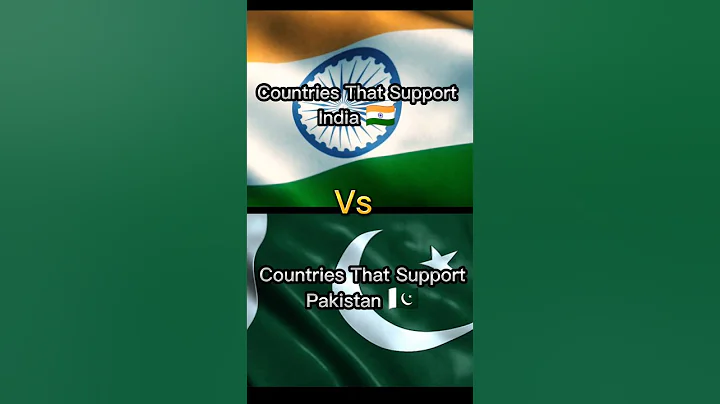India's "dual-front warfare" theory has a long history. The Indian Army proposed this concept more than ten years ago. This dual-front warfare refers to the Indian army fighting against China and Pakistan at the same time, and must strive to Don’t fall behind! Recently, Indian Air Force senior Chaudhry once again mentioned the concept of "two-front operations" and said that the Indian Air Force is ready and can even take the initiative if necessary! You must know that Chaudhry is the current Chief of Staff of the Indian Air Force. His speech can basically represent the Indian Air Force. However, what makes people wonder is where does the courage and confidence of the Indian Air Force come from?

Chief of Staff of the Indian Air Force Chaudhry
Not to mention two-front operations, the Indian Air Force basically had no advantage when facing the Pakistan Air Force . In the previous India-Pakistan wars, the Pakistan Air Force was inferior to the Indian Air Force in terms of equipment. , using excellent tactics and the personal skills of the pilots to achieve beautiful air combat results one after another. In February 2019, a moderate air conflict broke out between the Indian Air Force and the Pakistan Air Force. In this conflict, Pakistan The Air Force successfully shot down an Indian Air Force MiG-21 fighter and captured the pilot of the MiG-21. This defeat made the Indian Air Force angry and threatened to retaliate against Pakistan. Now three years later, it has been delayed. No retaliatory action by the Indian Air Force was seen.

In the many air battles between India and Pakistan in the past few decades, the Indian Air Force basically did not take any advantage.
Judging from the paper data of equipment, the Indian Air Force still has strength. Currently, the Indian Air Force has 36 Rafale fighter jets . There are more than 270 Su-30MKI fighters, in addition to dozens of MiG-29 fighter and hundreds of second-generation aircraft including MiG-21, MiG-23. Such an air force can operate in Asia and even the world. Make it to the top ten. Although the Indian Air Force has a certain strength, several surrounding air forces are also very strong, especially the Chinese Air Force. The overall strength is crushing the Indian Air Force!

Indian Air Force Su-30MKI fighter
Take the Indian Air Force’s most advanced Rafale fighter. This fighter was considered one of the top fighters at the time when it entered service in 2001. After all, it had not yet entered stealth at this point in 2001. In the fighter era, the U.S. Air Force's F22 fighter has not entered service. The Rafale fighter relies on advanced airborne equipment such as the active phased array radar and the "spectrum" airborne electronic combat system to compete with traditional third-generation and second-generation aircraft. There are still relatively big advantages in front of us, but the Indian Air Force's Rafale was just introduced in recent years. Now the performance of the Rafale fighter jets is no longer outstanding.

It is a joke that the Indian Air Force wants to use Rafale to deal with the J-20
my country's J-16 fighter has a larger combat radius and higher bomb load than the Rafale. In addition, the J-16 fighter is also equipped with active phased radar, and the J-16 fighter 16’s active phased array radar has greater power and longer detection range! The modern situational awareness system equipped by the J-16 is also not available in the Rafale. The J-16 has already surpassed the Rafale in technical performance, and the J-20 can cope with the Rafale very easily! In addition, the maturity of the Chinese Air Force's combat system is far beyond that of the Indian Air Force. At present, the Chinese Air Force has formed a system based on third-generation fighter jets, and is constantly fielding advanced stealth fighter J-20. The scale of the Chinese Air Force's early warning aircraft is larger than that of the Indian Air Force. Ten times, the performance is also better than the Indian Air Force's EBM-145H and A-50EI early warning aircraft.

The J-16 appeared at the plateau airport
From a practical perspective, the J-20 fighter can rely on its stealth advantage to quickly knock out important radar stations of the Indian Air Force in the first period of time, and will destroy several important airports approaching our country, and India Not only does the Air Force lack stealth aircraft to deal with the J-20, but its less advanced ground air defense system is also powerless against the J-20. After severely damaging the core combat resources of the Indian Air Force at the beginning, third-generation aircraft such as the J-16 and the J-11 J-11 can quickly consume the Indian Air Force's Su-30MKI-2, MiG-29 and other aircraft.Regardless of the fact that the Su-30MKI of the Indian Air Force is equipped with the passive phased array radar and a vector thrust engine, its actual performance is at the same level as our country's J-11B, and it cannot withstand the J-16's over-the-horizon strike! As for the 36 Rafales, whether they dare to take off under the watchful eye of our country's J-20s is still a question!

J-10 fighter jets deployed at plateau airports
Another major advantage of our air force is that we have bombers. Our country's H-6K can carry 6 Changjian-20 long-range cruise missiles. Previously, the H-6K appeared more in Flight training is conducted in the Pacific, but the H-6K also has the ability to operate on plateaus. The Changjian-20 has a range of about 2,000 kilometers. Under the protection of my country's strict air defense system in the hinterland, it has the ability to launch cruise missiles to attack the air force bases in the hinterland of India. The main airport of the Indian Air Force in the hinterland is H-6K plus Changjian-20. The combination will also be quickly destroyed under the attack. As a result, the Indian Air Force has basically lost any offensive capabilities, and the Indian Air Force has no counterattack ability at all when facing the combination of H-6K and Changjian-20. Don't look at the fact that the Indian Air Force has hundreds of third-generation aircraft. It seems very bluffing, but with the overall equipment performance and combat system lagging behind our Air Force, it will soon lose in actual combat!

The H-6K Plus Sword-20 is a dimensionality reduction strike for the Indian Air Force.
In fact, the Pakistan Air Force currently has enough strength to check and balance the Indian Air Force. In recent years, the main equipment of the Pakistan Air Force has basically been dominated by "Chinese" equipment. The Pakistan Air Force has not only introduced the J-10CE fighter jet with advanced performance, but the Xiaolong III fighter jet jointly developed by China and Pakistan is also equipped with an active phased array radar and can mount the PL-15 long-range air-to-air missile . The Pakistan Air Force currently has more than 300 third-generation fighter jets including the J-10CE, Xiaolong series and F16, and is equipped with 4 Chinese-made ZDK-03 early warning aircraft . The performance of this early warning aircraft is also better than that of the Indian Air Force's EBM-145H and The A-50EI is advanced. Although the Pakistan Air Force cannot form a comprehensive advantage over the Indian Air Force like our Air Force, judging from the current equipment of the Pakistan Air Force, it also has the strength to fully confront the Indian Air Force!

Pakistan Air Force Xiaolong fleet
In such a tripartite air power situation, the Indian Air Force is still talking about "two-front operations" and brazenly stating that it can take the initiative! It is no exaggeration to say that if the Indian Air Force dares to make any small moves on the border, you can think about the incident in 2019 when its own MiG-21 was shot down by the Pakistan Air Force. This is a warning to the Indian Air Force! At present, my country's advanced J-20, J-16 and J-10C have all been deployed at plateau airports. If the Indian Air Force ignores its own strength and takes the initiative to provoke, let alone the joint operations of the Chinese and Pakistani air forces, the strength of the western air force of our country is enough to make the Indian Air Force Got a profound enough lesson!





















